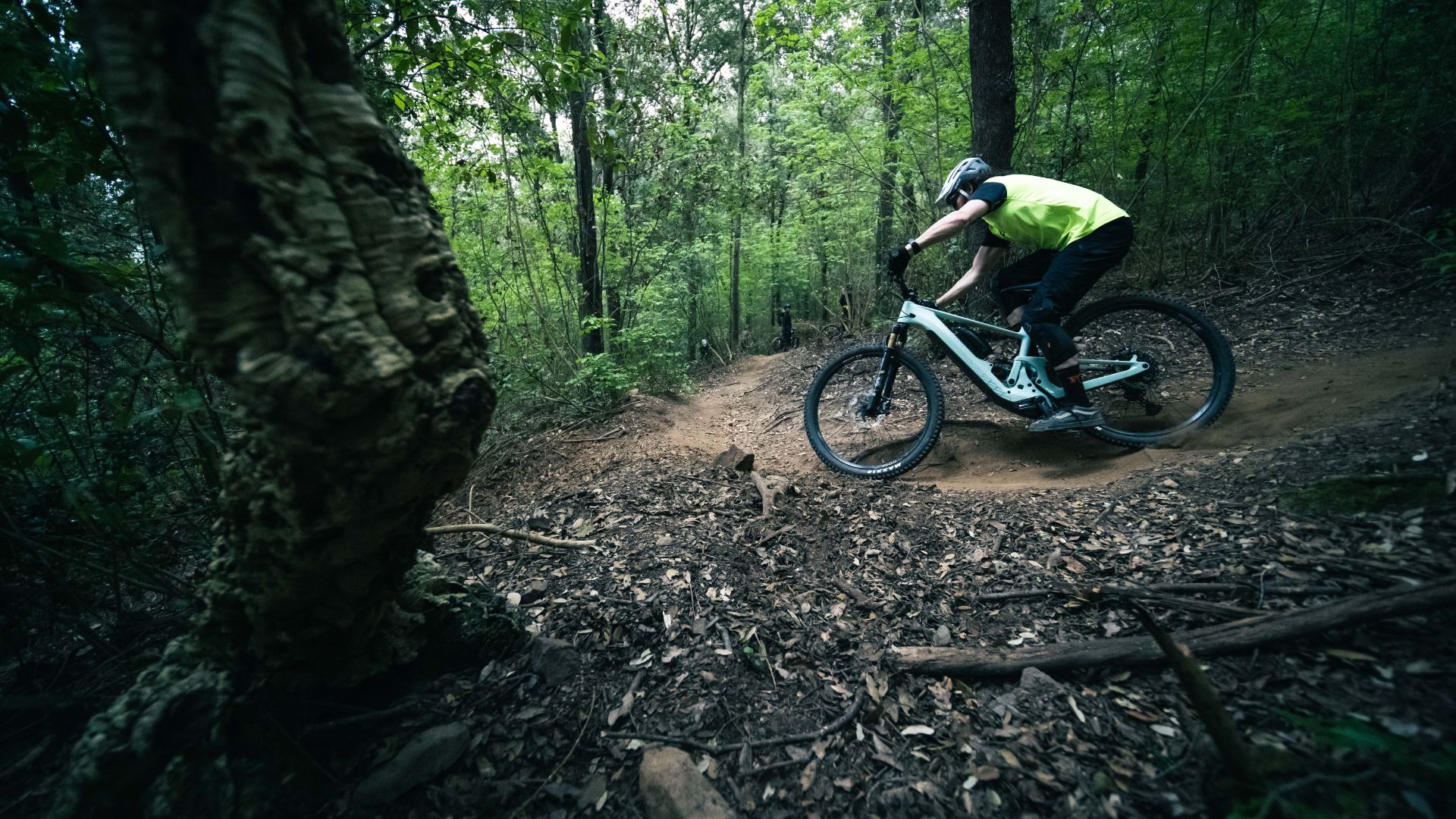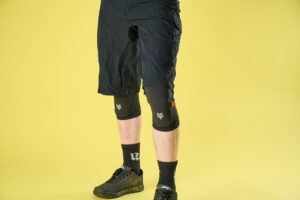A playful, dynammic short-travel eMTB that's easy to convert into a longer travel version? Sounds great! There's just one catch... (depending on where you are)...
SCOR 4060 Z ST XT e-bike first ride review
Not heard of SCOR or its range of electric mountain bikes? Let us introduce you to this Swiss bike brand and the 4060 Z short-travel eMTB and the playful, dynamic ride experience it provides. And, as an added bonus, it’s easy to convert to long travel if you need more oomph for the terrain you’re on.
Need to know
- 29er e-bike designed for trail riding and so much more
- The ST pairs 140mm rear travel with a burly 150mm Fox 38 fork
- Power supplied by Shimano Steps EP8 motor and custom 720Wh battery
- Angle adjust headset and shock flip-chip offer stacks of geometry options
- Short 436mm chainstays give snappy handling
- ST and LT versions share the same frame, but LT has 20mm more travel
- €8999

“What is it with you Brits, that you have to try and slash every corner?” That was a comment from one of the SCOR team after tucking in behind me on a trail in Punbino, Italy. It was at the launch of the 4060 Z e-bike and while it was meant as a friendly jibe, deep down I was insulted, and on two levels.
First and foremost, it’s pretty clear from my accent that I’m Canadian, not British, right? Second, I wasn’t actively trying to slash any turns. I like to think of my riding style as smooth and flowing, so slashing turns is something that happens to me, rather than the other way round.

The Maxxis Dissector tyre doesn’t hurt the bikes agility
So in that respect, the team at SCOR achieved their desired objective. No, not insulting me, but designing an e-bike that’s dynamic to ride. The secret to the snappy handling? Well, the Maxxis Dissector rear tyre certainly played a part. But to be fair to SCOR, it was refreshing to see the tougher Double Down casing on a 140mm travel bike, when most brands fit the lightest tyres possible to achieve unrealistic claimed weights.
No, the real reason for my new found ability to slash every turn probably had more to do with the short 436mm chainstay length that’s standard across all four frame sizes. Now, if like me, you’re a bit of a geometry geek, you’ll already know that a 436mm chainstay length isn’t that uncommon on e-bikes. The difference here is that the SCOR 4060 Z ST is a full 29er, which makes the short rear end that much harder to achieve than with a MX/mullet design.

Twin link suspension on the SCOR 4060 Z ST XT
Throw in the favourable characteristics of the low-slung twin-link rear suspension and stiff connection between both halves of the full carbon chassis and the top of the range 4060 Z ST XT doesn’t just look cool, it actively encourages you to ride like the new breed of cool kids too. In fact, if the weather had been a little colder in Italy, I could easily have pictured myself ripping down the trails with my jacket open, flapping freely in the sea breeze.
But I’m getting ahead of myself here, and you’re probably thinking who the hell are SCOR and what kind of bike is the 4060 Z ST? So let’s deal with both questions separately. SCOR is an offshoot of BMC. A separate brand that isn’t confined by the race driven, corporate identity that’s often associated with a precision Swiss timepiece.
In terms of personality then, SCOR is more Swatch than Rolex. That’s a pretty poor analogy, as there’s nothing fast fashion about a 9k e-bike. Still, you get my drift.

As for the bike, it is a little more complicated to explain than the banding, as SCOR uses the same full carbon frame across two platforms. You have the 140mm ST, featured here, and the 160mm travel LT. The difference then is that the 140mm ST uses a 47.5mm stroke shock, while the 160mm LT gets a 50mm stroke shock. Both bikes share the same 210mm eye-to-eye length to give the same fundamental frame geometry.
While the frames are identical, there are some big differences between the bikes. The 20mm shorter travel Fox 38 fork on the ST lowers the front end, steepens the angles and drops the BB at touch. The frames also come with asymmetric press in headset cups that offer 1.5º of head angle adjustment, where the ST ships in the steep setting.
And if that weren’t enough adjustment, there’s also a flip-chip in the lower link that changes the BB height by 6mm and impacts the head angle too. The flip chip has ST and LT marked on it, where ST is low setting, LT the high setting. In short then, the head angle is steeper and the BB lower on the ST than the LT, and both have tons of adjustment.
With only 150mm travel up front, SCOR could easily have fitted the Fox 36 instead of the 38, to help distinguish it further from the LT. Instead, it went with the bigger fork because it wanted riders to have the option to convert the ST into the LT, and vice versa. And with the Fox 36 now capped at 160mm travel, that makes perfect sense.
Both platforms are available with two build kits, XT or SLX. And to confuse matters further there’s also a range of analog bikes that share the same nomenclature and geometry. That’s a key part to the SCOR design philosophy though, as it wanted the same dimensions and similar ride characteristics across both platforms.

There’s a Shimano STEPS EP8 motor in there
Regardless of travel, the e-bikes are powered by a Shimano Steps EP8 motor and use a custom 720Wh battery that’s approved for use with the Shimano Steps system. There’s a cover on the underside down tube and the battery is pretty easy to swap or remove for changing – you only need a 4mm Allen key to drop it out. As with all Shimano EP8 motors, you’re accompanied by the rattle of the motor when freewheeling. And while you do start to ignore it, when you swap back onto a e-bike with a different motor that doesn’t have the EP8 rattle, it’s only then that you really appreciate how annoying it is.

The display unit is quite prominant on the handlebars
Shimnao’s Step system seems to be lagging a little in other departments too. Like the five chunk battery life readout. With one chunk remaining it potentially 20% of battery life or 10% or even less, so there’s always a bit of range anxiety when you’re running low on juice. Still, I really like the compact display that’s tucked neatly behind, and protected by, the handlebar, and the remote for toggling between the power modes is solid and very intuitive to use.
Where the Shimano motor is strong, is that it really mimics a natural ride feel of an analog bike, which to be fair, not everyone wants. On technical climbs it lacks some of the grunt of the higher torque motors, but the fineness is really appreciable when you’re struggling for traction. Which is a good thing, because if you mess up a section and stall, the Shimano motor is harder to get going again, especially if you’re in too hard a gear.
Also, while the short chainstays on the 4060 Z ST made it easier to dart in and out of turns and pop the front end up with the most subtle of weight shifts, the flip side side is that it also makes it harder to prevent the bike from rearing up and veering off line on steeper climbs. On one particularly steep ascent I found myself sitting very uncomfortably on the nose of the saddle just to stop the bike from looping out.

And that’s the compromise that SCOR was happy to strike. You probably won’t win a power stage on the 4060 Z ST as it’s been designed more for spinning up the climbs and riding more dynamically on the descents.
So the toughest choice here is deciding how much travel you need. And while the temptation is always to go with the longer travel bike, especially given that both the ST and LT have nigh on identical build kits and weights, the shorter travel bike will still feel more dynamic.
- Best electric mountain bike: join the riding revolution
- Best full face and convertible helmets for mountain biking
- Best bodyweight exercises for mountain bikers
Verdict
Ultimately, it depends on the kind of terrain you're riding. If it’s rough, chunky, fast and nasty, I’d go with the LT. But it’s more loamy and flowing, then the ST should be just the ticket. Best of all, you can’t really go wrong as both bikes can readily be converted from one to the other. All of which is academic, as SCOR currently isn’t represented in the UK. Hopefully that will change soon.
















